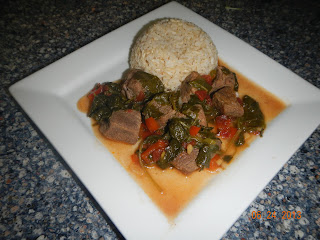What do you get when you cross a squirrel, a cat, a raccoon, and a monkey? A lemur. Ok, that was pretty lame, but I never claimed to be a comedian, just a Mom (and my kids thought it was clever). Ok, seriously, you can't have a week about Madagascar and not talk about lemurs, right? So here we go.
Lemurs are primates that are very distant cousins to the primates (monkeys, apes, etc) that live in other places of the world. They were able to evolve and adapt in relative peace and quiet for thousands (millions?) of years on their isolated island. There are around 100 different species of lemurs that range from 1oz. to 20lbs. Before they became extinct, there were some Giant Lemurs that weighed almost 200lbs.!
They have all adapted to fit into the ecological area of the island where they live. Many eat specialized diets of plants and fruit that only grow in the areas around them, because of this, the deforestation and habitat destruction that has happened over the last 2,000 years on the island has really endangered this animal species. At least 17 species have become extinct and the remaining species are either on the threatened or endangered lists. Sad, so sad. I recommend you visit the library or search the web for some more wonderful facts about these adorable animals- maybe you'll be inspired to help save them in some way.
We really wanted to make a lemur project, but something different that we haven't done before. So we made beady buddies. Are you familiar with these? They are little characters that you make with cord and pony beads that you can attach to a backpack or zipper. My daughter made some at school last year and really enjoyed them. So I found a template for a monkey and changed the design a little to make a ....
Ring-Tailed Lemur Beady Buddy
For the project you will need:
- black, grey and white pony beads. My black and grey beads looks very similar on the pictures.
- 1 yd. plastic cord or yarn with the ends stiffened
- template - this is pretty roughly drawn, sorry.
- clip so you can attach it to things
1. Fold your cord in half to find the center. Slip the folded end through the clip and then bring the loose ends through the folded loop and pull to tighten and attach the cord to the clip. This is called a half hitch.
2. String the first row of beads (that make the top of the head) on one of the strings. Pass the other string through the same beads but going in the opposite direction. Pull to tighten.
3. Put the beads on the string following the pattern on the template, bringing the strings through the beads from opposite ends each time.
4. The ears have a special trick. When you finish the 4th row (the one with the nose) put the two grey ear beads on one string and pass the cord through the beads in Row 2. Put the other two ear beads on and pass it through Row 4 again.
5. Keep going until you have finished the lemur's tail and then tie it off with a knot.
This is a little bit of an advanced art project. Adult help might be needed but I was surprised by how quickly my daughter caught on. I think it turned out pretty cute- my brother said it looked like a lemur that got run over. Brothers can be so mean.
We also made a gecko that was a little easier. I included that on the template too. This is a good project for those long summer afternoons when you want a little peace and quiet. There are hundreds of different templates online!






















































